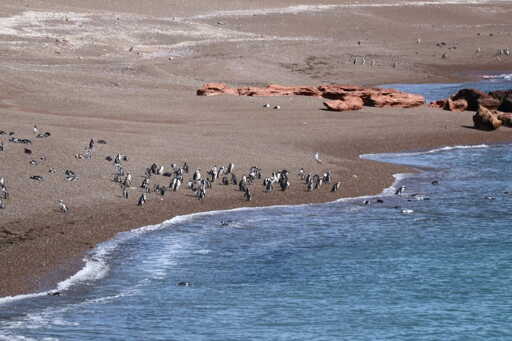In the southern Argentinian province of Chubut, in the pristine region of Patagonia Azul, arid grasslands give way to steep cliffs, rocky beaches and dense kelp forests, creating a rich and biodiverse habitat, with humpback (Megaptera novaeangliae) and sei (Balaenoptera borealis) whales as well as South American sea lions (Otaria flavescens) among the megafauna that visit the area for food and breeding. The region is also home to around 40% of the world’s population of Magellanic penguins (Spheniscus magellanicus), along with more than 50 species of seabirds, including southern giant petrels (Macronectes giganteus) and imperial cormorants (Leucocarbo atriceps). The area is now receiving important extra legal protection following the creation of the Patagonia Azul Provincial Park by the Chubut provincial government, using land donated by Rewilding Argentina, a conservation-focused NGO. The park covers almost 300,000 hectares (740,000 acres); about 87% of the area is marine habitat, all of which has been designated a no-take zone, helping to address local impacts of industrial fishing and bottom trawling. The park also includes more than 60 islands, important macroalgae forests and rocky intertidal zones that provide a haven for fish and marine invertebrates to develop, while its formation also bolsters existing efforts to protect the area. Patagonia Azul Provincial Park. Credit: Rewilding Argentina. In 2013, the national government established the Southern Patagonia Interjurisdictional Coastal Marine Park, to protect the region’s marine ecosystems and wildlife, and in 2015, UNESCO designated the Patagonia Azul UNESCO Biosphere Reserve. Covering more than 3.1 million hectares (7.6 million acres),…This article was originally published on Mongabay
From Conservation news via this RSS feed


